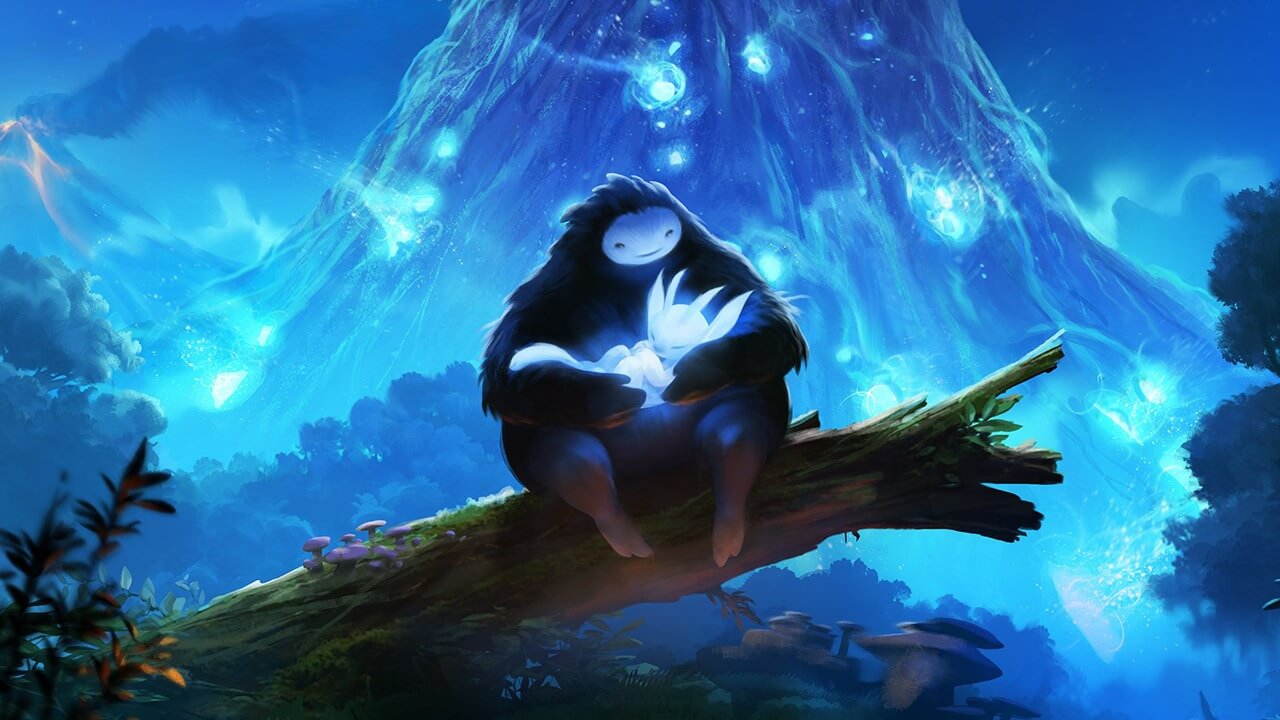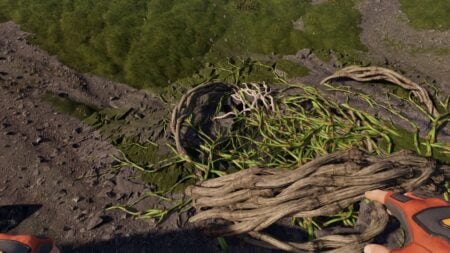Title: Ori and the Blind Forest
Available On:
Platform Tested On: PC
Developer: Moon Studios
Publisher: Microsoft Studios
Genre: Platform adventure
Official Site: www.oriblindforest.com
Release Date: March 11, 2015
Where To Buy:
Ori and the Blind Forest is a single-player platform adventure designed by Moon Studios and published by Microsoft. Originally released on March 11, 2015, it received an overwhelmingly positive response from fans and critics alike—and just by watching its official trailer it’s not difficult to see why. The game itself is one of the most beautiful interactive works of art I’ve ever seen, with dreamy, celestial landscapes and relentlessly starry visuals that make it difficult to look away. If such determined graphics weren’t enticing enough, its gameplay is inspired by universally treasured classics like Rayman and Metroid, improving upon the nuts and bolts of its precursors with an evolving tree of skills and increasingly challenging obstacle courses.
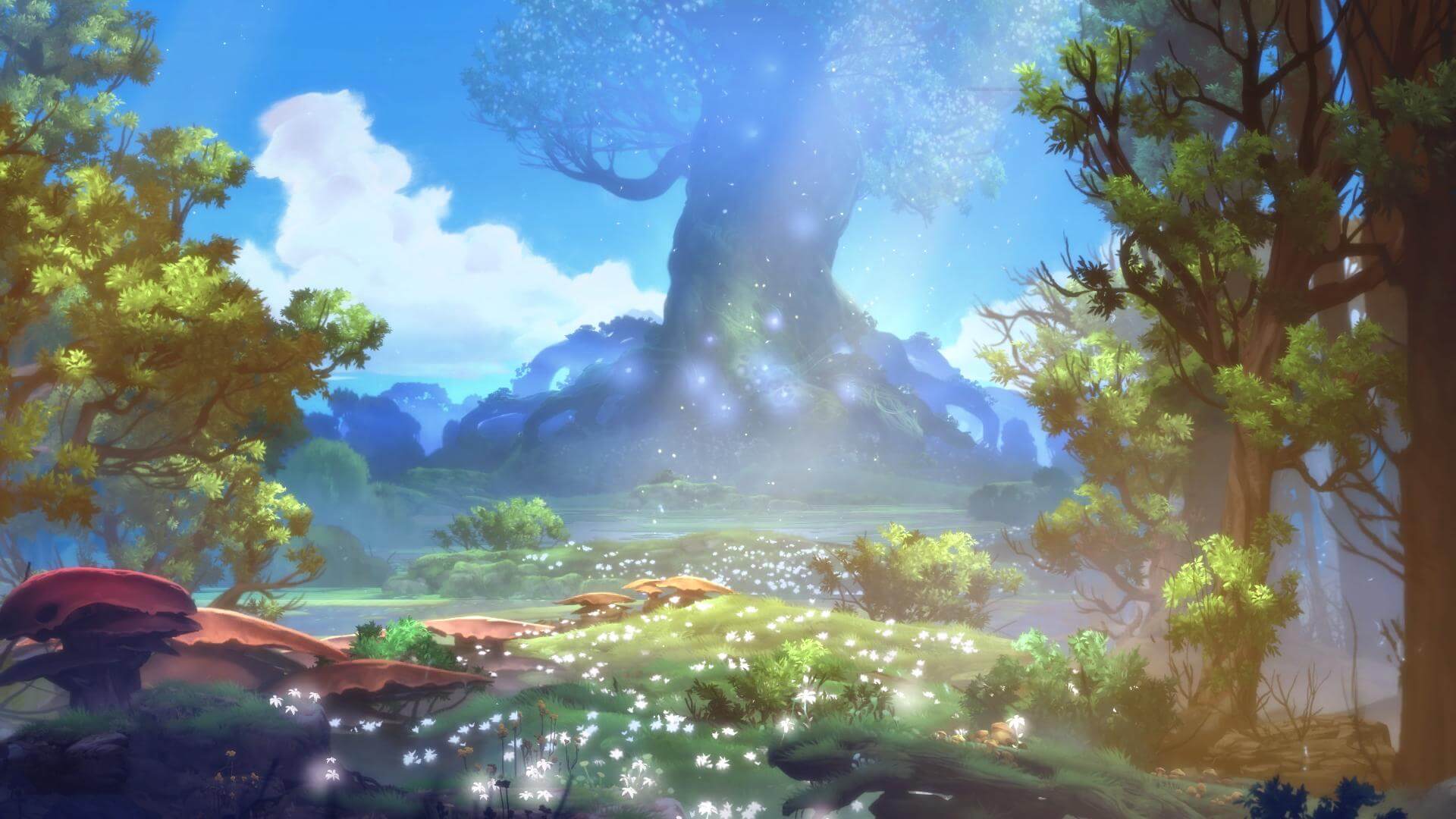
When you assume the character of Ori, you are assuming the role of a white guardian spirit, whose only protector—a creature named Naru—passes away in the opening cut scene. Naru’s death is a direct result of the world of Nibel inexplicably beginning to wither and perish, the fruit that once flourished gradually rotting away. In his grief over losing Naru, Ori collapses and dies next to the Spirit Tree, which restores him to life and grants him access to a collection of extraordinary abilities.
Like many platform games these skills unlock gradually, but unlike many platform games, there are several different avenues from which to manually create Ori’s supernatural makeup. The ability tree branches into the three categories: defense, convenience, and attack. Each enhancement is achievable through ability points, a currency obtained by killing enemies and collecting the many ability cells scattered throughout the world. With help from a being called Sein, who acts as a guide and teacher—as well as an accessory in Ori’s attacks—the two set off to save the dying forest and restore its elemental balance.
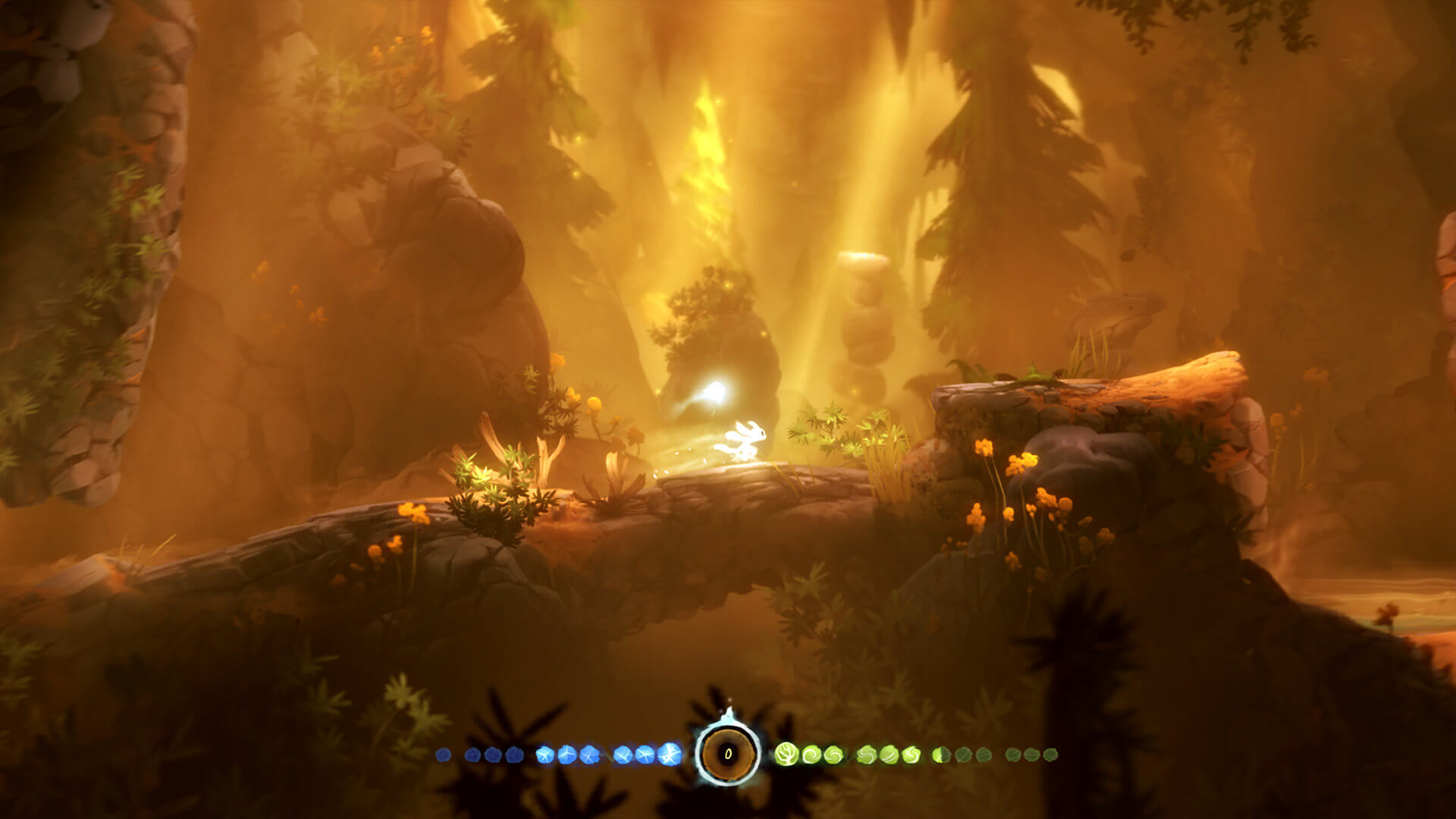
As you traverse the wildwood of Nibel, attacking enemies, overcoming obstacles and improving your level, locked doors will break open with treatment from collected keys and initial areas of access progress into more and more open landscapes. Outside of standard save points, developers transfer the responsibility of saving to the player through the unique implementation of Soul Links. These are manual checkpoints created by energy cells, and the number of available Soul Links increases over time.
Like the three different branches of the ability tree, there are three main elements: Waters, Winds, and Warmth, and the recovery of each essence is accomplished by restoring its light. Because of the sealed doors and designated areas of play, the game tends to guide you to each location with a natural flow, and instead of traditional boss fights the more significant challenges center around your flight of escape once these lights have been restored. Escape runs are difficult but exhilarating, with each death serving a purpose as you repeatedly navigate the course with increasingly practiced fingers. By the time you reach the later stages of Ori and the Blind Forest, the world of Nibel will have unfurled significantly; however, this does make it difficult to navigate large distances at a faster pace.
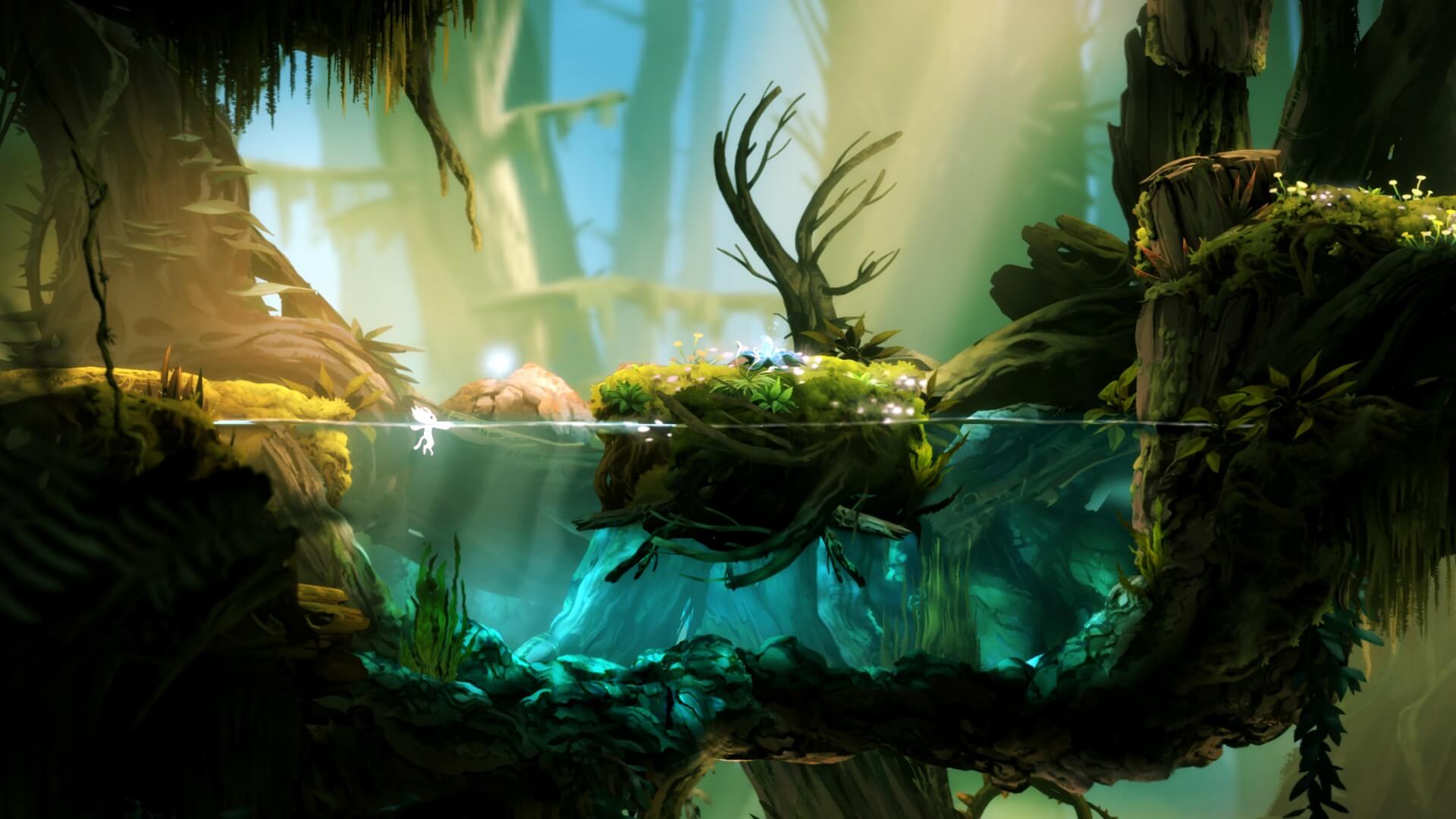
There are many unique areas across Nibel, and the game’s ambitious need to satisfy the player is never relegated to one area. With an indigenous soundtrack that heavily employs pipes, bells and soft singing, the atmosphere in Ori and the Blind Forest is as breathtaking as it is severe. In a decision that must be directly commended, overdone water levels are flatly rejected in favor of more refreshing mechanics, like backward navigating that will boggle your mind or using nearby enemies to propel Ori in any direction.
Avoiding the many plants that prick and wound the guardian spirit is a task in itself and demands attentiveness when using Ori’s various abilities. Riding a gust of wind or somersaulting through the air might be intoxicating, but it certainly isn’t carefree, as the player is required to dodge enemies and avert harmful objects in constant search of a safe strip of wall or land. Cut scenes are a reward rather than an unnecessary saturation of story or something to skip through, letting you lean back for awhile and revel in luminous cinema.
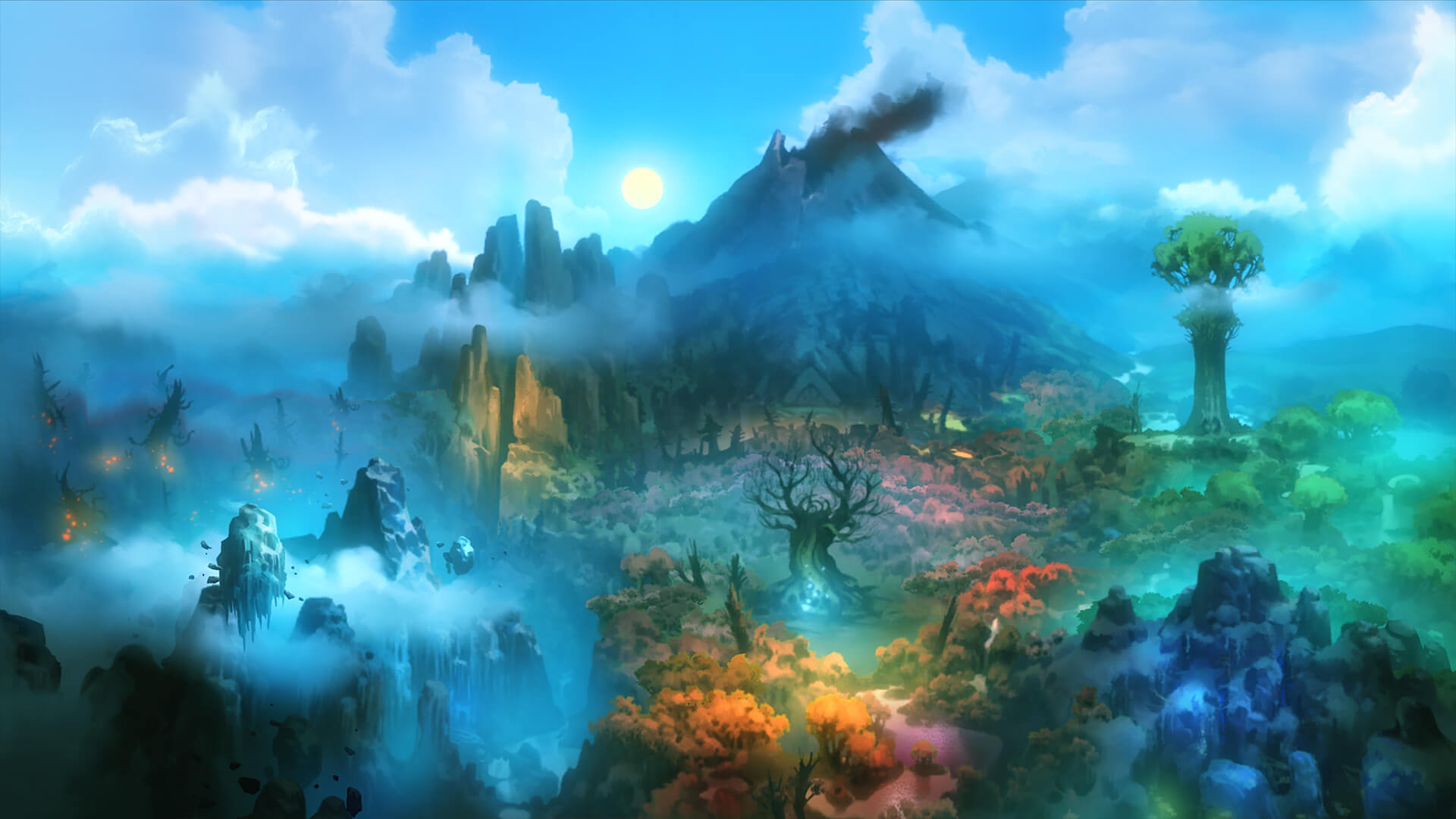
It’s hard to decide which aspect is the most satisfying in Ori and the Blind Forest. Is it the ethereal soundtrack? The outstanding visuals? The sense of involvement in an ancient folk tale? Each element strives for above and beyond where the bar might have been set, its position never good enough, and the result is a completely homogenous mixture of sound, sight and touch. Though the idea of perfection varies with everyone, this game comes dangerously close, earning it Best Audio and
With the release of its anticipated remastered version today, director Thomas Mahler has created what he calls the “ultimate version” of Ori and the Blind Forest. This includes a new location titled Black Root Burrows, an expanded theater mode, new difficulties, and upgraded abilities and attack maneuvers. Moon Studios has touched upon the idea of turning Ori and the Blind Forest into a movie, but until that point, the remastered version of the game will do us fine.
[embedyt] https://www.youtube.com/watch?v=1p9ut65UURk[/embedyt]
- Gameplay: Original obstacles and graceful skills and combat.
- Graphics: Stunningly beautiful, some of the best game graphics to date.
- Sound: Indigenous and ethereal soundtrack, satisfying sound effects.
- Presentation: The perfect mixture of sound, sight, and gratifying gameplay.
[review]

